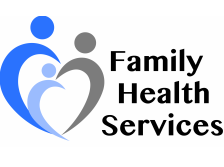Diabetes News – September 2021
September is Healthy Aging Month
Here are 10 Tips For Healthy Aging
1. Be realistic
If you feel overwhelmed by some activities (yours and/or your family’s), learn to say NO! Eliminate an activity that is not absolutely necessary. You may be taking on more responsibility than you can or should handle. If you meet resistance, give reasons why you’re making the changes. Be willing to listen to other’s suggestions and be ready to compromise.
2. Shed the “superhero” urge
No one is perfect, so don’t expect perfection from yourself or others. Ask yourself, “What really needs to be done?” How much can I do? Is the deadline realistic? What adjustments can I make?” Don’t hesitate to ask for help if you need it.
3. Take one thing at a time
For people under tension or stress, an ordinary workload can sometimes seem unbearable. The best way to cope with this feeling of being overwhelmed is to take one task at a time. Pick one urgent task and work on it. Once you accomplish that task, choose the next one. The positive feeling of “checking off” tasks is very satisfying. It will motivate you to keep going.
4. Move more, sit less
The first key guideline for adults is to move more and sit less. This recommendation from health.gov is based on new evidence that shows a strong positive relationship between increased sedentary behavior and increased risk of all-cause mortality, heart disease, and high blood pressure. All physical activity, especially moderate-to-vigorous activity, can help offset these risks. Even for inactive adults, replacing sedentary behavior with light-intensity physical activity is likely to produce some health benefits.
5. Aerobic exercise
For substantial health benefits, adults should do at least 150 minutes (2 hours and 30 minutes) to 300 minutes (5 hours) a week of moderate-intensity, or 75 minutes (1 hour and 15 minutes) to 150 minutes (2 hours and 30 minutes) a week of vigorous-intensity aerobic physical activity, or an equivalent combination of moderate- and vigorous-intensity aerobic activity. Preferably, it would be best if you spread aerobic exercise throughout the week.
6. Muscle strengthening
Adults should also do muscle-strengthening activities of moderate or greater intensity, involving all major muscle groups on two or more days a week, as these activities provide additional health benefits.
7. Review your daily diet and make necessary changes
Choose a diet that emphasizes fruits, vegetables, whole grains, and fat-free or low-fat milk and milk products; includes a variety of protein foods such as seafood, lean meats, and poultry, eggs, legumes (beans and peas), soy products, nuts, and seeds. Chose a diet low in saturated fats, trans fats, cholesterol, salt (sodium), and added sugars and stay within your daily calorie needs
8. Volunteer
Change the world by volunteering. Become a United Nations Volunteer. The UN Volunteers website currently lists over 150 ideas from around the world. Here are a few examples: volunteer to make a field hockey website for kids in Sierra Leone, Africa; write up UN volunteer stories from the Asia Pacific; teach elementary students via Skype in southern India once a week. Or you can volunteer to translate, proofread and develop websites.
9. Dream and then get to it
Visit the U.S. National Parks in Google Earth which brings the national parks to you in a Google Earth guided tour through 31 different parks around the country.
The producers of the National Parks program hope that “Once you’ve virtually explored the national parks in Google Earth, we encourage you to put down your phone, put on some sunscreen and get outside to explore the wonders that our parks system has to offer. Start by finding the park closest to you.
10. Launch your next career
Capitalize on your career experience and start a new one. Yes, enjoy a brief “retirement.” Travel, spend more time with family and friends. Develop new hobbies. And, then become an entrepreneur. Statistics show people who retire and do nothing are more likely to die within 3 years.
Source: https://healthyaging.net/healthy-aging-month/10-tips-for-september-is-healthy-aging-month-2021/
The Diet-Betus – our version of recipe of the month just as tasty but with a healthy tweak here and there.
Raspberry-Lemon Chiffon Icebox Cake
Makes 10 servings (10 slices)
Ingredients
- 4 cups of raspberries (fresh or frozen)
- 2¼ teaspoons fat-free, sugar-free, reduced-calorie lemon instant pudding mix
- ½ cup nonfat milk
- 1¼ teaspoons unflavored gelatin
- 8 oz. container of frozen light whipped topping (thawed)
- 4 finely crushed graham crackers
- 2 Tablespoons of melted butter or butter substitute
- 1 Tablespoon sugar (substitutes not recommended for this recipe)
- ½ cup water
Instructions
- Coat an 8×4-inch loaf pan with cooking spray. Line with a double layer of plastic wrap, letting it overhang 2 inches on the sides.
- Combine the berries and ¼ cup water in a saucepan. Mash the berries then bring to a boil. Reduce heat and simmer, uncovered, for 10 minutes. Press the mixture through a fine-mesh sieve and discard the seeds. Return to the saucepan and stir in the sugar. Return to a simmer and cook for another 10 minutes until reduced to ½ cup. Let it cool slightly.
- Add the remaining ¼ cup water to a small saucepan and sprinkle gelatin on top (do not stir). Let stand 5 minutes. On medium heat, stir until the gelatin is dissolved. Combine the gelatin mixture, berry mixture and ½ cup whipped topping and mix it all together. Add another ½ cup whipped topping until there are no streaks. Spoon the mixture into the prepared pan, cover and refrigerate until set (about 1 hour).
- Whisk milk and pudding mix in bowl until thick. Add ⅓ of the remaining whipped topping until combined, then fold in the remaining whipped topping until no streaks remain and spread it over the raspberry layer.
- Combine the graham cracker crumbs and melted butter in a bowl. Gently press the mixture onto the pudding layer. Cover and refrigerate for 1 to 8 hours.
- Use the overhanging plastic wrap to remove the cake from the pan. Invert onto your serving plate. Garnish with additional berries if you choose.
Source: Diabetic Living Magazine & EatingWell.com
Community offerings:
Many community offerings have been postponed or canceled as a result of the coronavirus/COVID 19.
Please call the number listed for the event to verify availability, dates, and times. If you have questions regarding Coronavirus/COVID-19 please call 1-833-4-ASK-ODH (1-833-427-5634) or visit: https://www.cdc.gov/coronavirus/2019-nCoV/index.html or https://coronavirus.ohio.gov/wps/portal/gov/covid-19/.
Diabetes Empowerment Education Program (DEEP)
COST: Free
CONTACT: Tina Elmlinger 419-624-1856
The Diabetes Empowerment Education Program [DEEP] is offered every Wednesday for six weeks. Good attendance is important. This free program is for diabetics, pre-diabetics, and spouses or caregivers of a diabetic. Residents of Erie County, aged 60 or older, please call 419-624-1856 to register.
Diabetes Support Group – Firelands Regional Medical Center
The Diabetes Support Group presented by Jean Feick CNP, CDE, meets the third Wednesday of each month Sept–November and January-May from 12:00pm –1:00pm. This meeting is free to the public and no registration is required. Attendees are welcome to purchase lunch in the hospital cafeteria and come to the adjacent Cafeteria Meeting #1. A different topic will be reviewed each month. If you have questions, please contact the Diabetes Education Department at 419-557-6992.
HEALTH & WELLNESS SCREENING – offered by Firelands Regional Medical Center
You must Pre-register for all Lab Work at 419-557-7840.
Sandusky Health & Wellness
Firelands Regional Medical Center South Campus
1912 Hayes Avenue Sandusky, OH
Saturday, September 11
7:00 am -9:30 am
Sandusky Health & Wellness
Firelands Regional Medical Center South Campus
1912 Hayes Avenue Sandusky, OH
Saturday, October 9
7:00 am -9:30 am
Sandusky Health & Wellness
Firelands Regional Medical Center South Campus
1912 Hayes Avenue Sandusky, OH
Saturday, November 6
7:00 am -9:30 am
Sandusky Health & Wellness
Firelands Regional Medical Center South Campus
1912 Hayes Avenue Sandusky, OH
Saturday, December 4
7:00 am -9:30 am
Health & Wellness Screenings include:
- Complete Blood Count with Metabolic & Lipid Panel (No Eating or Drinking for 12 Hours – Water Allowed – includes liver and kidney function studies, fasting blood sugar, thyroid, cholesterol, HDL/LDL, and triglyceride levels along with a complete blood count.) – $45;
- Hemoglobin A1C (A three-month report card on how well your blood sugars have been running. A test used to diagnose diabetes and/or to evaluate how well your treatment plan is working.) – $25;
- PSA (Prostate Specific Antigen)- $30;
- Vitamin D – $35;
- TSH – $25
Diet and exercise are an essential part of diabetes management, so is routine testing.
The A1C test—also known as the hemoglobin A1C or HbA1c test—is a simple blood test that measures your average blood sugar levels over the past 3 months. It’s one of the commonly used tests to diagnose prediabetes and diabetes, and is also the main test to help you and your health care team manage your diabetes. Higher A1C levels are linked to diabetes complications, so reaching and maintaining your individual A1C goal is important if you have diabetes.
Last quarter, 70% of our diabetic patients had an A1C of less than 9%. Talk with your provider to discuss the right options for you.



